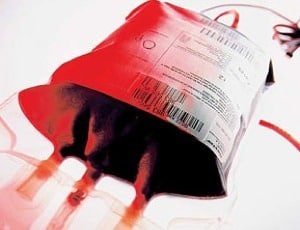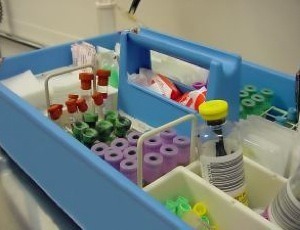INICC report found 7785 CLABSI

“Pooled CLAB rate was 5.30/1,000 CL-days; VAE rate was 11.47/1,000 MV-days, and CAUTI rate was 3.16/1,000 UC-days” Rosenthal et al (2021).
Skill decline after CVC insertion simulation training

“While there was some evidence of skill retention after simulation, overall most studies demonstrated skill decline over time” Legoux et al (2021).
Intramuscular injection pain reduction

“As a result of the meta-analysis, it was found that ShotBlocker application in IM injection in adult patients reduced patients’ pain intensity” Şahan and Yildiz (2021).
Why do peripheral IV catheters fail

“We aim to identify ultrasonographic factors that predict impending PIVC failure prior to clinical exam” Bahl et al (2021).
Implantable port placement technique – Full Text

“The aim of this work was to review different techniques of placing TIVAD implants to evaluate the aetiology of immediate complications” Toro et al (2021).
Neonatal PICC placement and prevention of hypothermia

“This quality improvement project’s goal was to reduce the hypothermia rate in very low birth-weight (VLBW) neonates by replacing cloth blanket/towels with a plastic drape during PICC placement” Phan and McIntyre (2021).
IM injection online education

“Web-based education and Kahoot usages in the evaluation showed positive effects on nursing students’ intramuscular injection knowledge and skills” Öz and Ordu (2021).
Thrombolytic therapy for tunnelled catheter dysfunction

“The success of thrombolysis in subsequent de novo THC thrombosis decreases in patients who previously required intraluminal thrombolytic administration” Selçuk et al (2021).
Subcutaneous PICC securement device outcomes

“In this retrospective analysis, subcutaneously anchored securement of PICCs was a safe and effective strategy for reducing the risk of dislodgment” Brescia et al (2021).
Extravasation case study with pictures – Full Text

“Grade 4 peripheral intravenous infiltration with skin tears has seldom been reported” Wang et al (2021).
Chlorhexidine allergy related to medical products

“Severe cases were managed with intravenous fluids, steroids, and epinephrine (adrenaline). None of the reported cases were fatal” Gerges et al (2021).
Likelihood of transfusion associated HBV infection

“It is estimated that at least 13 potentially infectious donations from donors with OBI remain undetected annually, equating to an overall residual transmission risk of 3.1 per million donations using our current screening strategy of HBsAg screening with HBV nucleic acid testing (NAT) in pools of 24” Harvala et al (2021).
Fluid intake and output monitoring

“Overall, documentation accuracy of the intake and output charts was 77%, with 100% accuracy in the oral and intravenous fluid intake, and 21% accuracy in the output documentation” Lim et al (2021).
Peripheral IV catheter management in childbirth

“Regular use of a large-gauge catheter is counter intuitive when placed in the small veins of the hand with extension tubing. More research is needed to promote best practice around gauge selection, site and women’s experience” Kearney et al (2021).
Neonatal blood culture contamination – Full Text

“This study describes a 12-month quality improvement (QI) program to reduce the BCC rate in a neonatal unit by 50%” Allen et al (2021).
Implantable port to support electroconvulsive therapy

“The placement of a totally implantable venous-access device (TIVAD) could be an alternative to overcome these difficulties in certain subjects” Macau et al (2021).
Needlefree connector IV extension set incident

“We experienced complete failure of a needle-free connector extension set with a Luer-access split septum device in multiple patients due to the split septum remaining fused and essentially unsplit despite being connected on both ends” Naftalovich et al (2021).
CVC insertion site swab and BSI diagnosis

“The novel objective of our study was to determine the capability of insertion skin site culture to predict CRBSI and primary bloodstream infection (PBSI), that include CRBSI and bloodstream infection of unknown origin (BSIUO)” Lorente et al (2021).
Sternal intraosseous devices

“When considering IO vascular access in adults or older children, medical providers should consider the sternum as the recommended IO access” Kearney et al (2021).
IV additive administration best practice standards – Full Text

“We will synthesise the evidence concerning safe and effective preparation and administration of intravenous therapy and medicines to inform the development of a national guideline for healthcare professionals in Ireland” Carr et al (2021).
Infiltration and extravasation reduction in children

“High-quality care was more effective than routine care in reducing the incidence and degree of infiltration and extravasation of peripheral intravenous infusions” Litao et al (2021).
Ultrasound assessment of peripheral IV catheters

Ultrasound assessment of peripheral IV catheters Abstract: Objective: Establish the feasibility of pediatric intensive care unit (PICU) nurse-directed ultrasound assessment (UA) of peripheral intravenous (PIV) catheters, compare the results of UA to traditional assessment (TA), and determine PIV survival after UA. Design: Prospective observational cohort study. Setting: PICU within a children’s hospital. Patients: PICU patients […]
IV access ability whilst wearing PPE

“The study provides evidence that nurses wearing biosafety Level-2 suits were able to obtain intraosseous access faster and more effectively as compared with IV access during simulated COVID-19 paediatric resuscitation” Drozd et al (2021).
PICC-related VTE in cancer patients

“The non-O blood group, larger ratio of PICC diameter:vein diameter, and high level of triglycerides were significantly associated with PICC-related VTE” Li et al (2021).
Automated blood cultures in a resource-limited setting – Full Text

“Implementing automated BC in a resource-limited setting is possible and improves microbiological diagnostic performance” von Laer et al (2021).
Ultrasound vascular access in children

“This article gives a review of the current evidence, the basic knowledge of the technique and the structured approach to follow for supraclavicular ultrasound-guided brachiocephalic vein access in children and neonates” Acosta and Tusman (2021).
Central venous tunneled catheter stabilization

“The single-suture method of the central tunneled catheter exit closure is equal in efficacy to the double suture method” Porazko et al (2021).
Adverse events with biologic infusions – Full Text

“In this study, biologic infusions administered at home, compared with those administered at a facility, were associated with increased adverse events requiring escalation of care” Baker et al (2021).
Preclinical evaluation of passive disinfection caps

“We found that these catheter hubs were compatible, fully operational, and airtight with use of 3M Curos stopper caps after 6 months of use with 122 caps per catheter hub” Simon et al (2021).
Impact of multiple PICC insertions – Full Text

“Although PICCs have been widely used worldwide in various patients, the safety and feasibility of the multiple insertions of the PICC in this population have not been fully verified” Hashimoto et al (2021).

